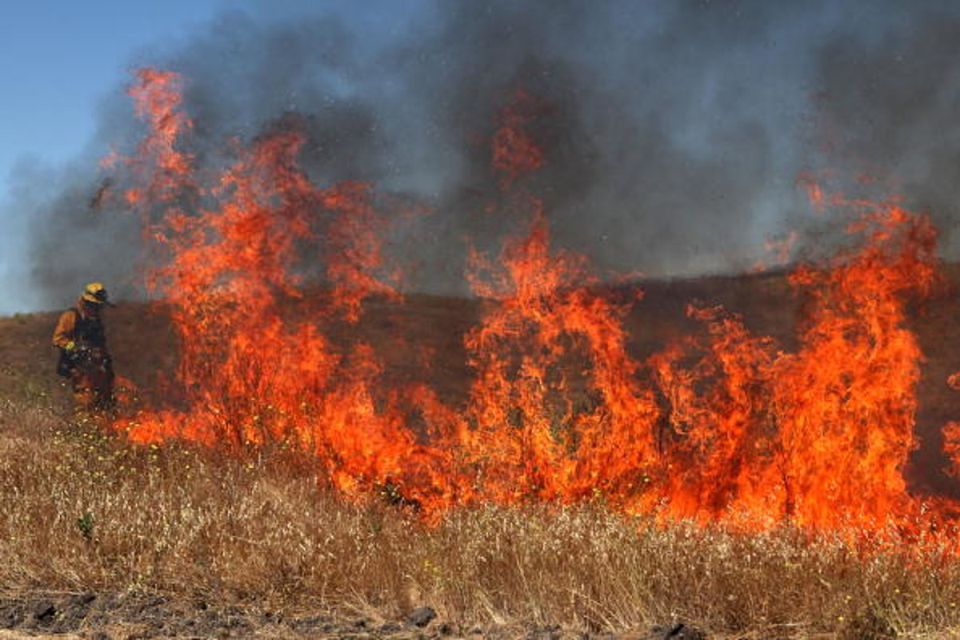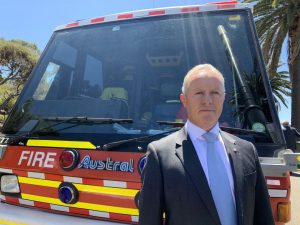
AFTER YEARS OF floods and heavy rains, Australian authorities should prepare for widespread grass fires on a scale never-before experienced, the Climate Council and Emergency Leaders for Climate Action (ELCA) have warned.
The Powder Keg: Australia Primed to Burn report warns that three years of La Niña have led to prolific vegetation growth, creating ‘powder keg’-like conditions for fires.
 “Excessive rainfall in recent years has caused prolific vegetation growth in Australia, which is now drying and turning into fire fuel as we experience hotter, drier conditions,” Greg Mullins, former Commissioner of Fire and Rescue NSW and founder of Emergency Leaders for Climate Action, said. (Pictured left).
“Excessive rainfall in recent years has caused prolific vegetation growth in Australia, which is now drying and turning into fire fuel as we experience hotter, drier conditions,” Greg Mullins, former Commissioner of Fire and Rescue NSW and founder of Emergency Leaders for Climate Action, said. (Pictured left).
“There is an increased risk this year of major grass fires breaking out during hot, dry and windy weather across NSW, Queensland, Victoria, SA, and Western Australia up to and possibly including April. Firefighters will also watch the NT closely in winter, as there is a precedent for post-La Niña grass fires to start there in July.
“Grass fires can be as deadly and destructive as forest fires. They are very fast moving. People who have been caught up in these types of fires in the past have been unable to outrun them and have sadly died.
“The summer of 2023 – 2024 will also almost certainly see a return to normal or above normal bushfire conditions across most of Australia, with previous long wet periods followed by major fires in the NSW Blue Mountains and even the suburbs of Sydney. All levels of government need to understand the escalating risk of devastating fires and ramp up preparedness now,” said Mr Mullins.
The Climate Council and ELCA’s recommendations to governments include:
Emergency services and land management agencies need more funding to respond to escalating disasters, as well as more full-time staff and volunteers.
Emergency management agencies, state and local governments need a permanent arrangement rather than ad hoc solutions to initiate and manage long-term disaster recovery efforts.
Communities need more funding for education and resilience projects.
Much stronger efforts to move beyond fossil fuels by rapidly reducing emissions this decade, which can help avert even worse catastrophes.
Australia’s most widespread grass fires on record followed a long La Niña in 1974 and 1975. Some 117 million hectares burnt across the country, even in desert areas. Climate change has amplified since then and we now find ourselves in a potentially worse situation.
“Firefighters fear that grass fires occurring in hot, dry and windy conditions worsened by climate change could unfold on a scale never before experienced, potentially overwhelming emergency services at times, and placing communities at great risk,” Mr Mullins said.
“Governments at all levels need to urgently invest in measures that help communities withstand and cope with worsening climate impacts, and accelerate efforts to rapidly lower greenhouse gas emissions this decade to avoid catastrophic climate impacts,” Mr Mullins added.
For further information, go to: climatecouncil.org.au





